Hojo Cuff
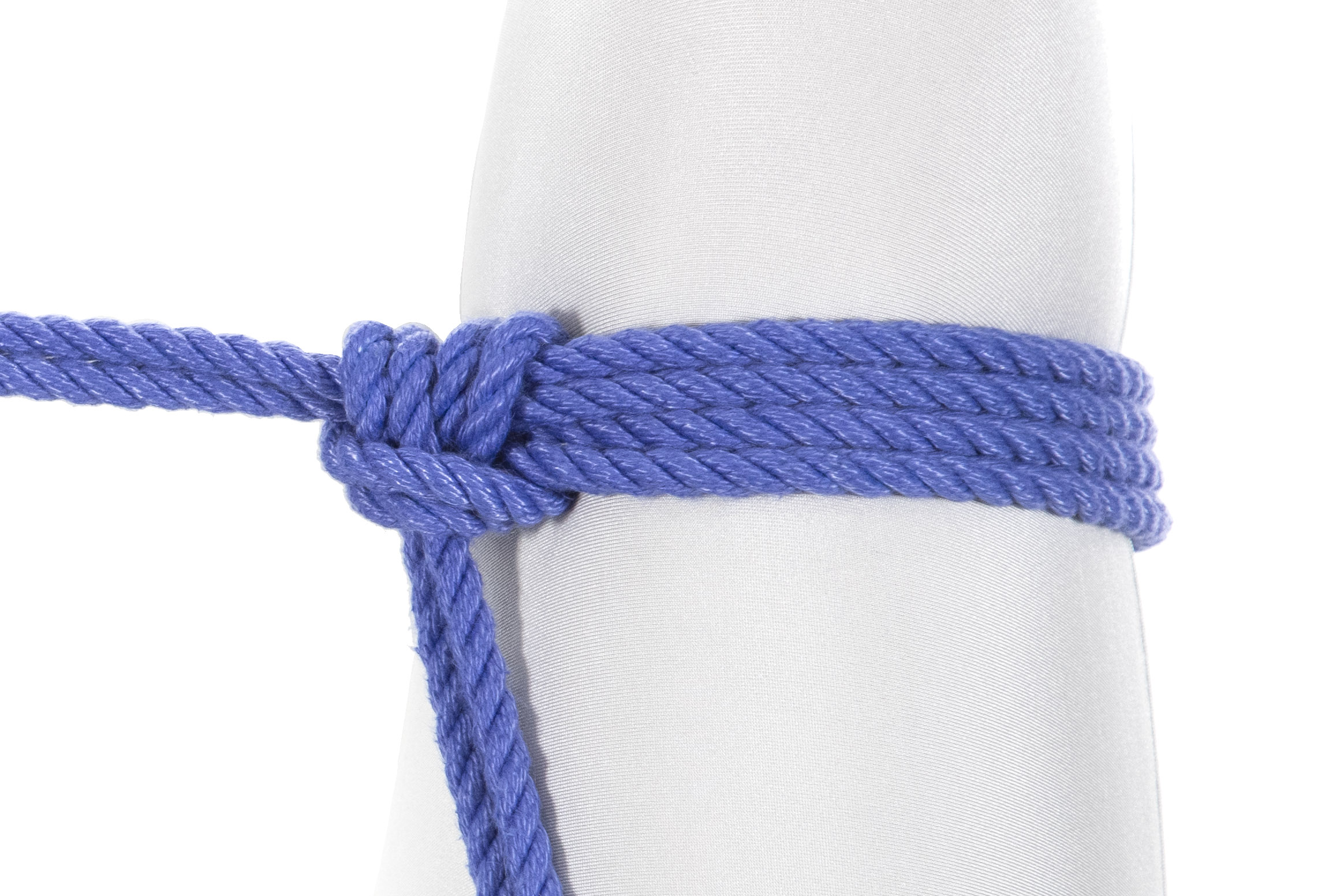
The hojo cuff is a versatile bondage workhorse. It’s a great technique that we use extensively, but it’s important to understand its limitations.
The hojo is a way to add a column tie to a limb when the rope is already tied to another body part and under tension. The waist to thigh position is a great example of it in use.
We like the hojo cuff because it’s quick and easy to tie and it can be tied under tension. The great drawback is that it’s intrinsically unstable: pulling on the standing part will cause it to tighten. You can reduce but not eliminate the instability by keeping the running end under tension (ideally more tension than the standing part).
Adding half hitches or other stabilizing elements can also reduce but not eliminate the instability.
Looking for something more stable? Try the captured overhand cuff.
Step by step
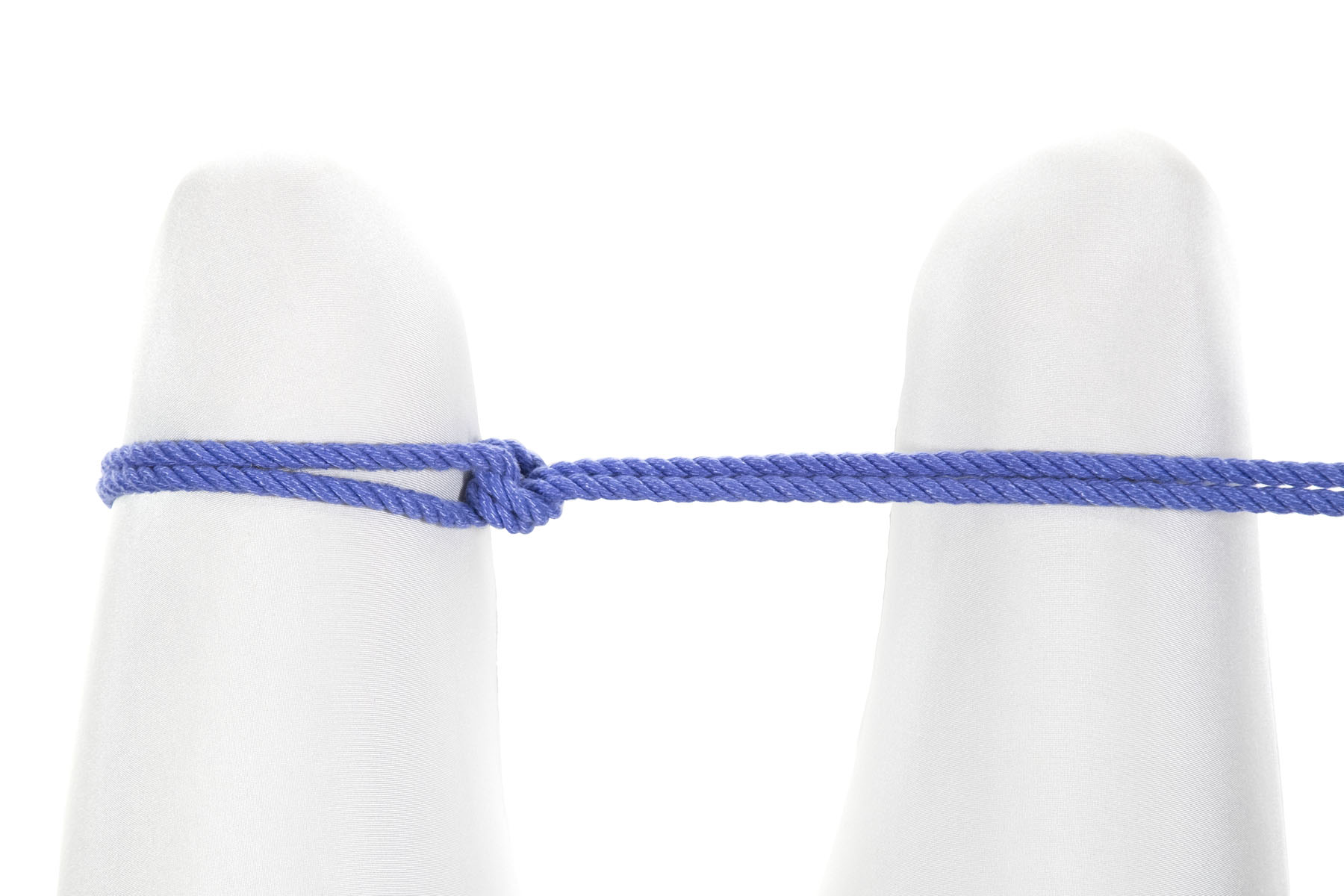
1Tie your favorite column tie around your left leg and run the rope over to your right leg.
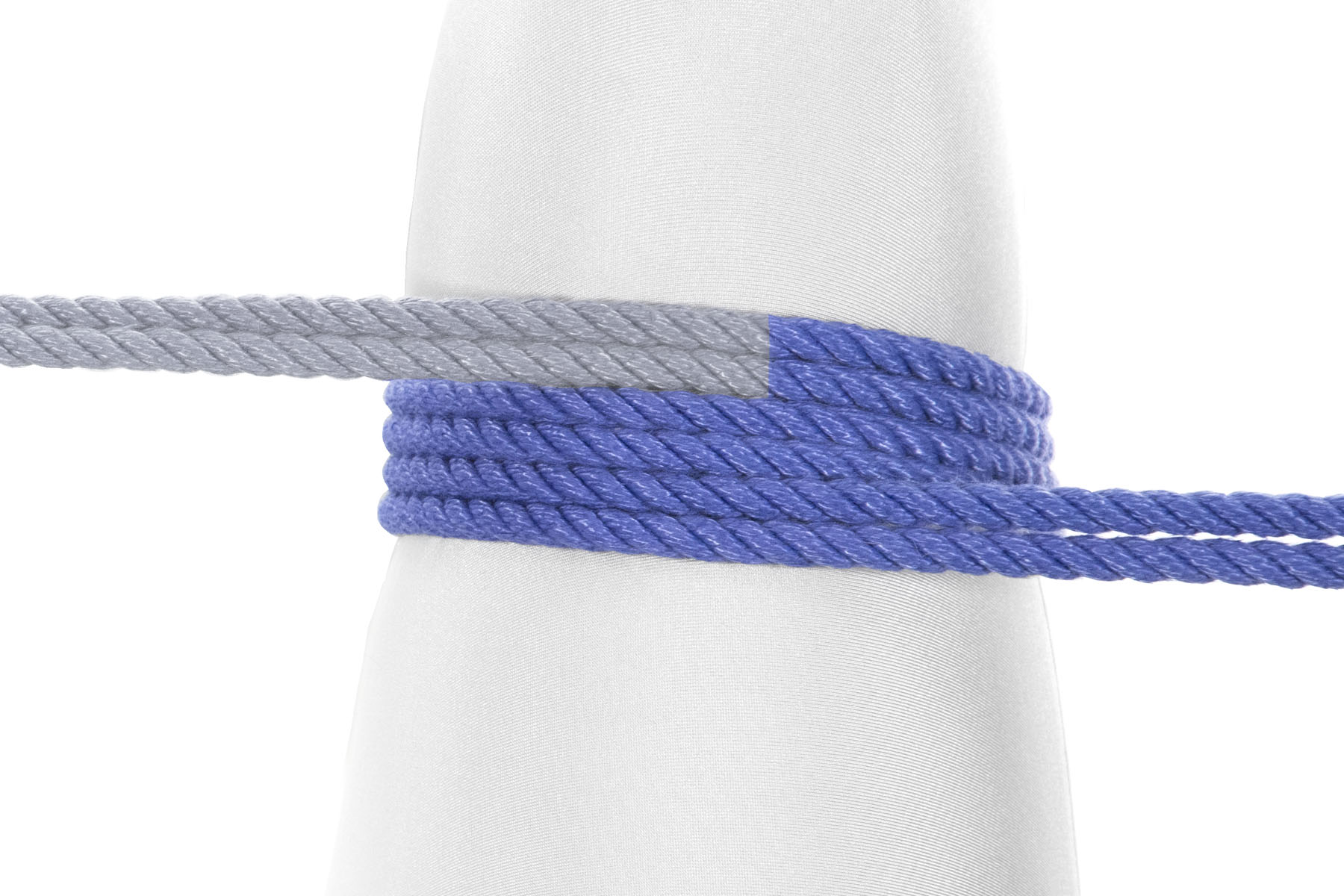
2Make two wraps around your right leg, moving up the leg toward your body.
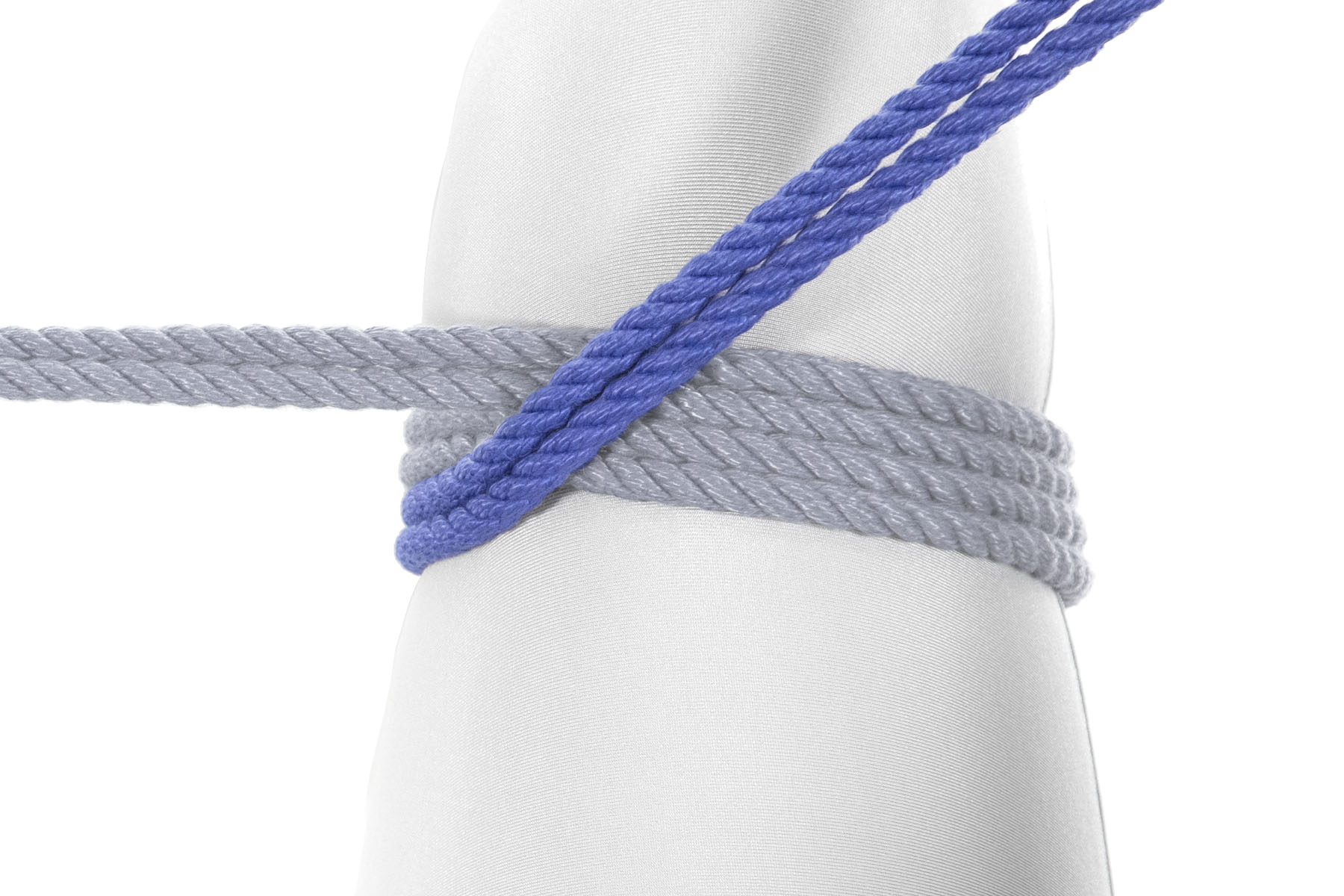
3Cross over both wraps, going over the standing part right where it meets the leg.
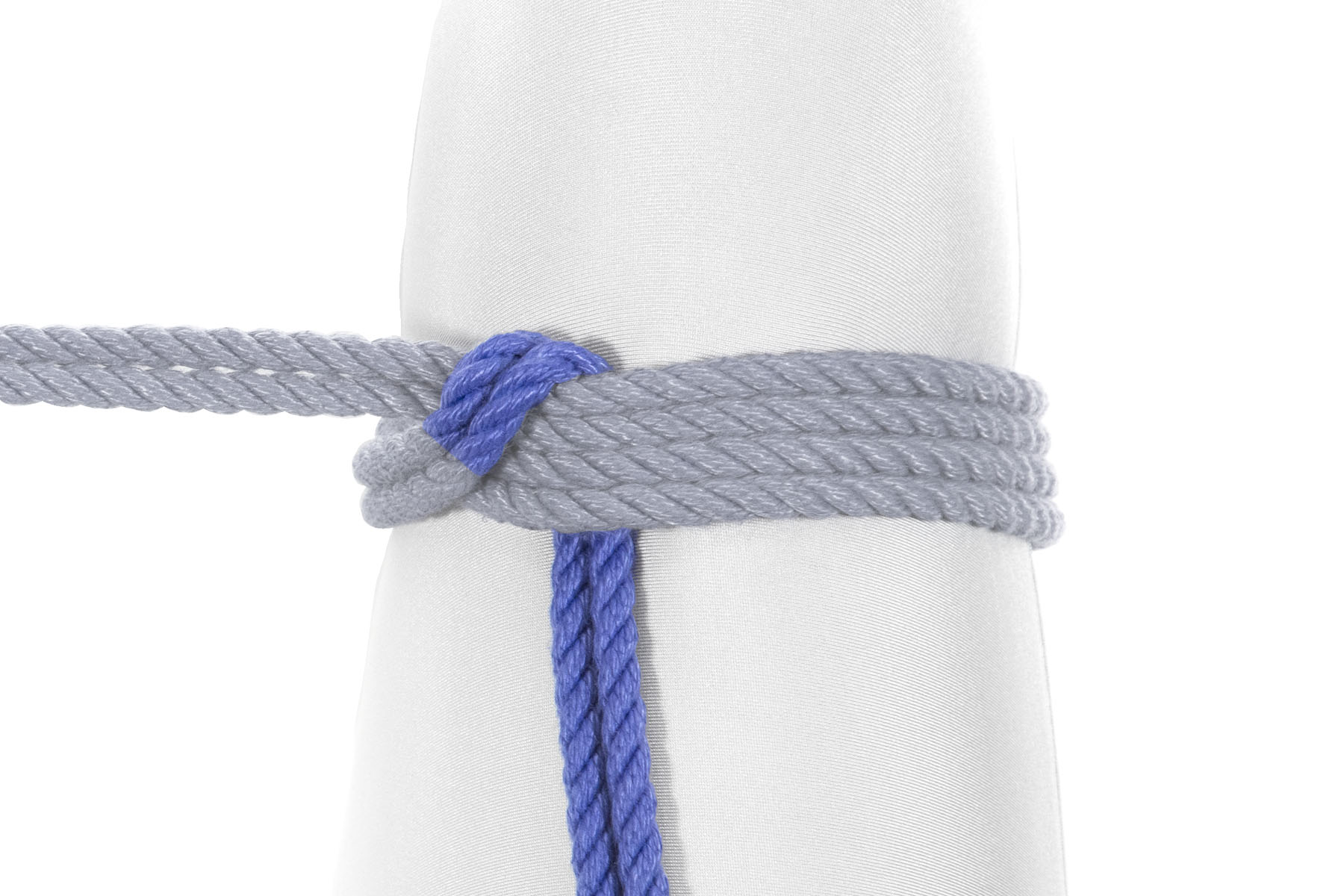
4Go underneath the wraps.
At this point, the hojo cuff is technically complete.
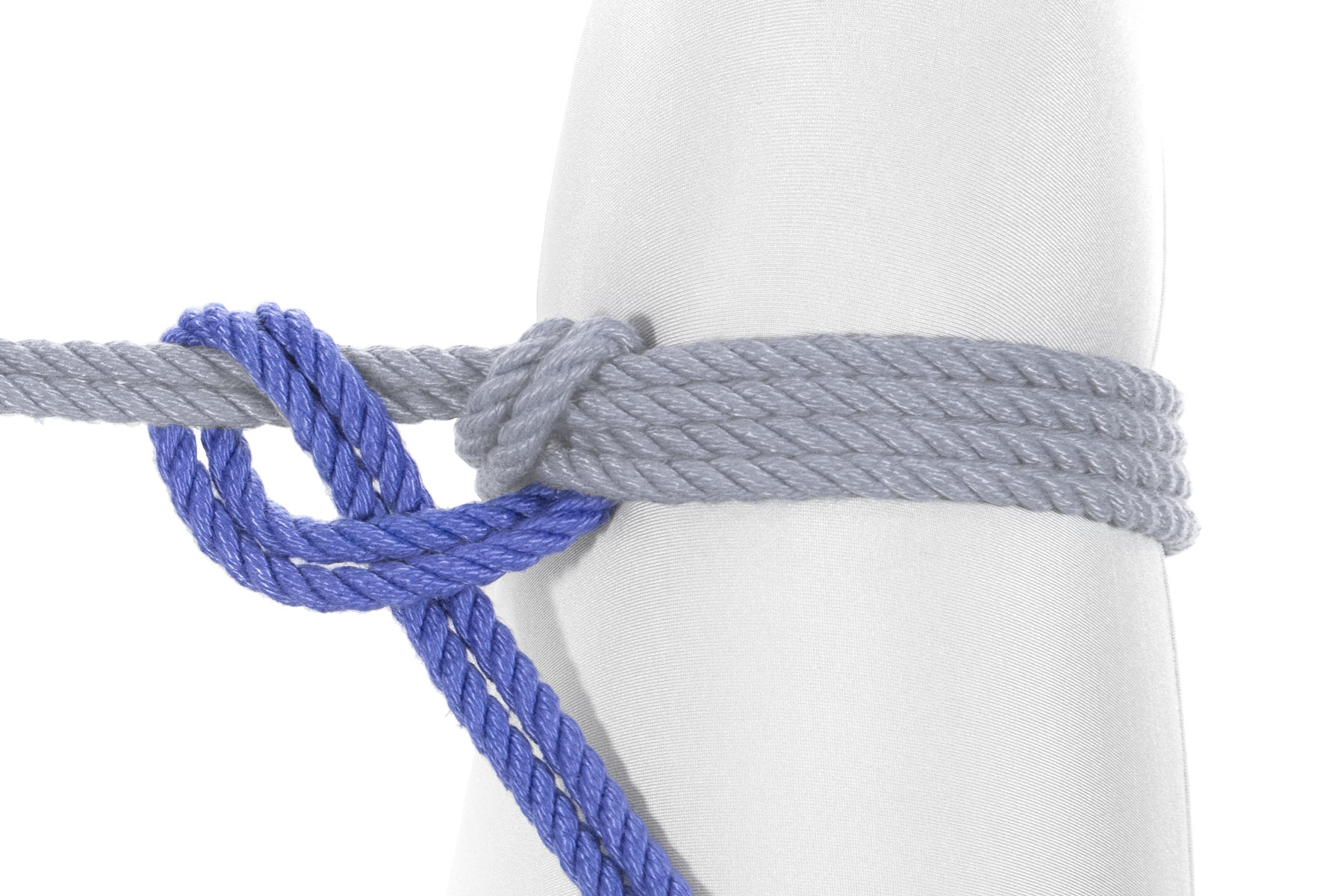
OPTION5If you like, you can add a half hitch around the standing part.
The hojo cuff is fast and convenient but is intrinsically unstable and prone to capsizing and tightening. Keeping the running end under tension will reduce but not eliminate the instability.